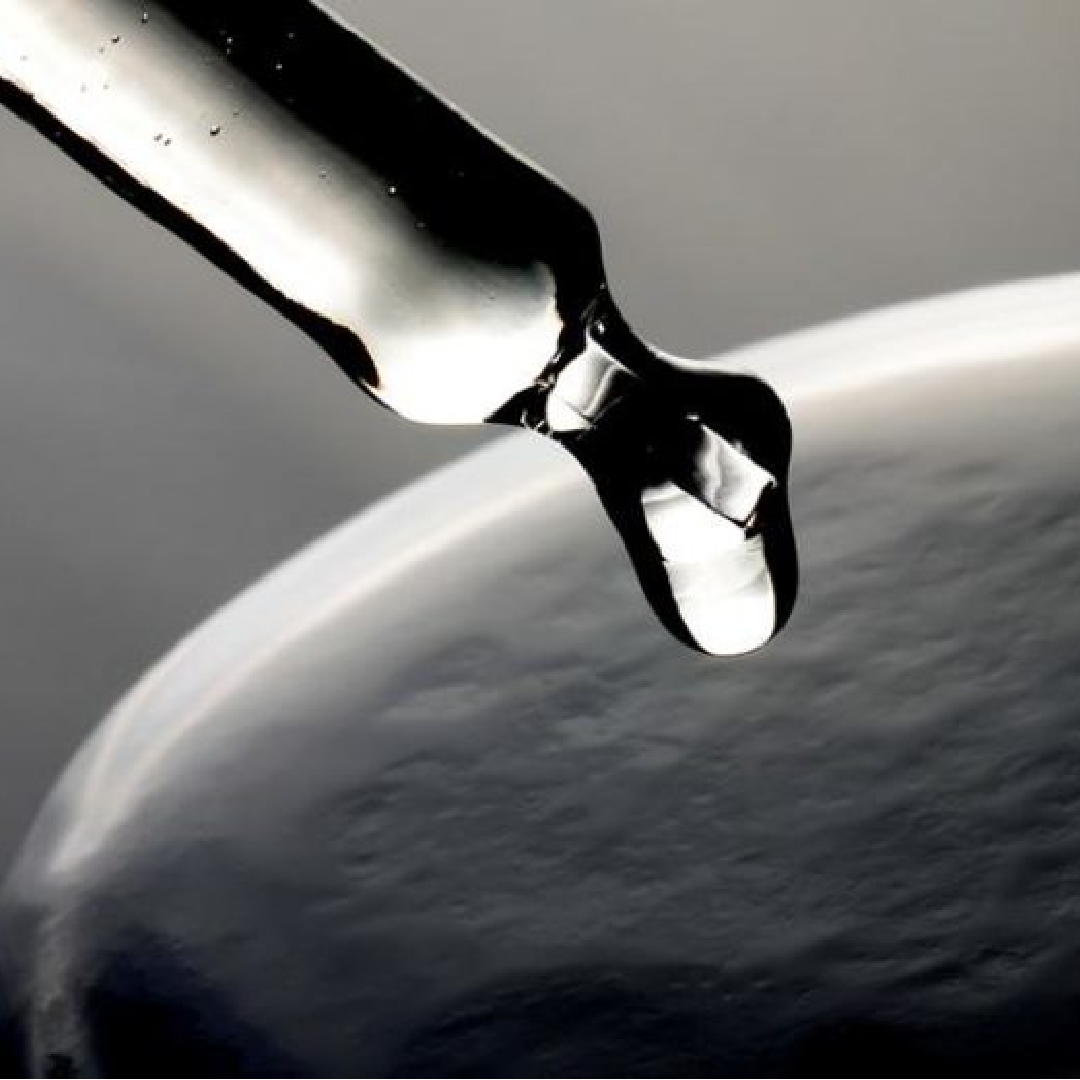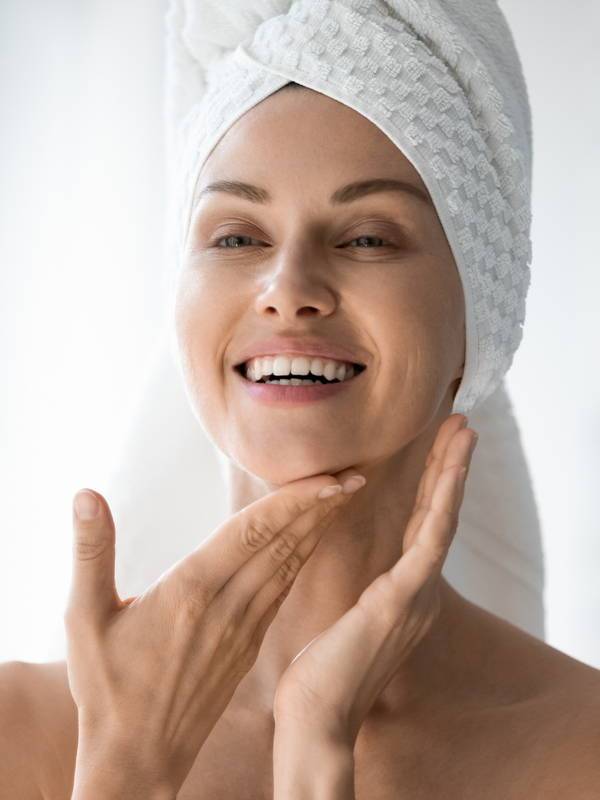Did you know our skin has its own circadian rhythm?

Many of us have heard of the circadian rhythm, also known as our internal body clock or 24-hour physiologic rhythm (Chen, 2005), which alternates between being alert for the day, and sleeping through the night. This is all controlled by the hypothalamus1,2.
The Skin’s Circadian Rhythm
Interestingly, the skin contains its own circadian clock genes3. Circadian variations include skin temperature (higher in the day and lower at night), transdermal water loss (increasing in the evening) and keratinocyte proliferation, peaking around midnight4,5.
Overnight studies have shown our skin cells go through the process of repairing the damage undergone through the day due to UV exposure with repair of skin cell DNA damage peaking at midnight6. Using ingredients such as Retinol (Vitamin A) at night provides the optimum time to stimulate collagen and elastin.
It is therefore important to use products that work in line with your skin’s circadian rhythm, which is why we recommend using Retinol in the evening, as well as reducing sensitivity to UV light. We must also remember that adequate sleep is necessary for DNA repair activity in the skin5 as sleep deprivation negatively impacts skin7. To support anti-ageing effects, it would be beneficial for your skin to encourage these processes to return to normal.
Why our Retinol+ Emulsion 1.0 works with your natural circadian rhythm
Retinol+ Emulsion by iS Clinical is an encapsulated Retinol with a bioidentical lipid capsule, which allows the active ingredient to be delivered to the desired site using lower amounts to achieve the benefits. The product has numerous Retinol boosters further potentiating the effects, whilst minimising adverse reactions8.
Throughout the testing phase of the product’s conception, the Retinol+ Emulsion 1.0 was evaluated for its ability to influence gene expression in the skin, with an emphasis on PER2, which is a gene of circadian rhythm9 that links the circadian cycle to the endoplasmic reticulum alpha signalling network in many tissues, including skin10.
Gene sequencing was performed in the study, and gene expression was evaluated 48 hours after application. The results demonstrated a wide range of epigenetic messaging, including regenerative process11.
PER2 was strongly activated, which would lead to an enhanced repair process overnight.

Photomicrographs were taken with immunofluorescence and demonstrated significant anti-ageing effects of the Retinol+ Emulsion 1.0, which leads us to describe the product as one offering strong regenerative and healing properties.
Additionally, the differential gene expression for the product was demonstrated for 2,285 genes out of approximately 20,000, which led to upregulation (wound healing, repair etc) and downregulation (inflammation) to various factors leading to a positive outcome for the skin itself12.
To conclude, the Retinol+ Emulsion 1.0 works hard while we sleep to repair and regenerate our skin through the night, therefore assisting in the circadian rhythm entrainment and night repair.
AUTHOR:
Dr Manav Bawa MD, PGDIP (ESSQ) MRCS (ENG), M ED (SE) & DIC, MRCGP, PGDip(CAIT), MBCAM.
Medical Director, Time Clinic, UK.
References:
- Chen ST, Choo KB, Hou MF, Yeh KT, Kuo SJ, Chang
Deregulated expression of the PER1, PER2 14. and PER3 genes in breast cancers. Carcinogenesis. 2005;26(7):1241–1246. - Tanioka M, Yamada H, Doi M, et al. Molecular clocks in mouse skin. J Invest Dermatol. 2009;129(5):1225–1231.
- Zanello SB, Jackson DM, Holick MF. Expression of the circadian clock genes clock and period1 in human skin. J Invest Dermatol. 2000;115(4): 757–760.
- Frentz G, Moller U, Holmich P, Christensen IJ. On circadian rhythms in human epidermal cell proliferation. Acta Derm Venereol. 1991;71(1):85–87.
- Lyons AB, Moy L, Moy R, Tung R. Circadian Rhythm and the Skin: A Review of the Literature. J Clin Aesthet Dermatol. 2019;12(9):42–45
- Yosipovitch G, Xiong GL, Haus E, et al. Time- dependent variations of the skin barrier function in humans: transepidermal water loss, stratum corneum hydration, skin surface pH, and skin temperature. J Invest Dermatol. 1998;110(1):20– 23.
- Guan, L., Mehra, R., Baron, E. (2017). Sleep and Aging Skin. In: Farage, M., Miller, K., Maibach, H. (eds) Textbook of Aging Skin. Springer, Berlin, Heidelberg.https://doi.org/10.1007/978-3-662-47398-6_155
- Clinical Study Retinol 1.0 Subject Study. 2023. INS.0122.1310.2344.pdf. Science of Skincare.
- DeHaven C. 2023. White Paper. Clinical Study Retinol 1 Circadian INS.0122.1310.CIR.2335 digital (1).pdf. Accessed 12.03.2024
- 8864 – GeneResultPER2 period circadian regulator 2 [Homo sapiens(human)]. 2023. ncbi.nlm.nih.gov>gene. Clinical Study “Retinol.
- Clinical Study “Retinol+ Emulsion 1.0 Gene Activation.” Innovative Skincare. 2023
- Clinical Study RETINOL 1.0 INS.0122.1310.GENE.2325 (2).pdf




